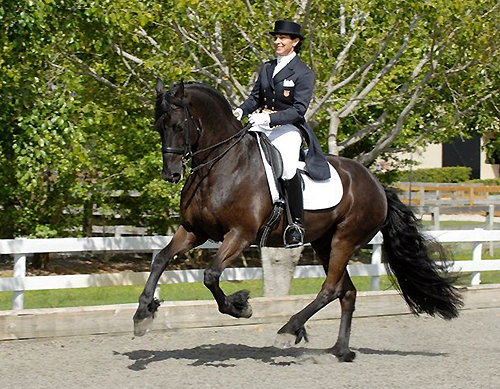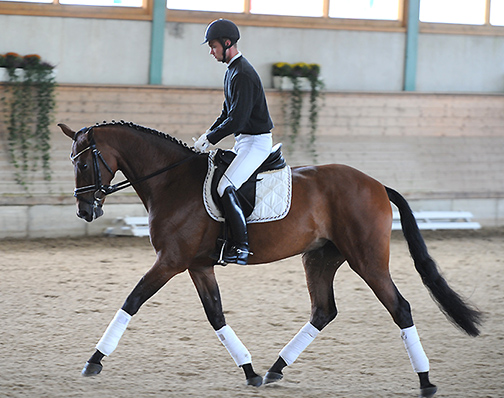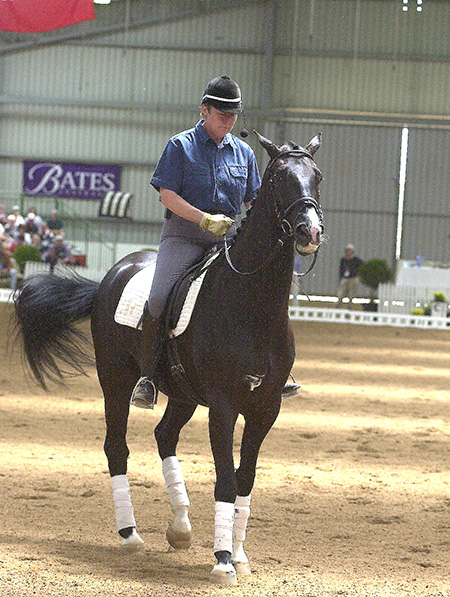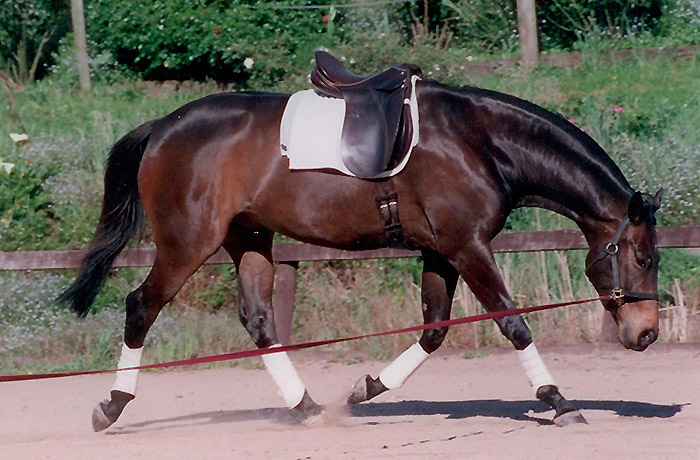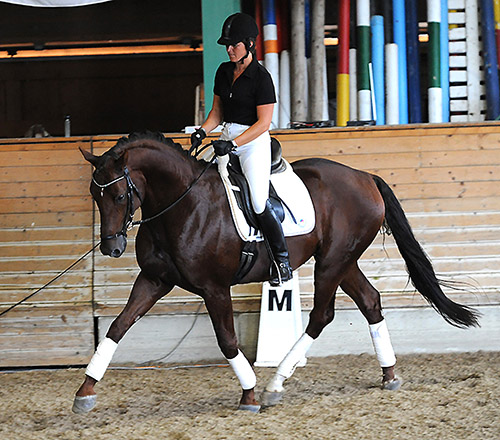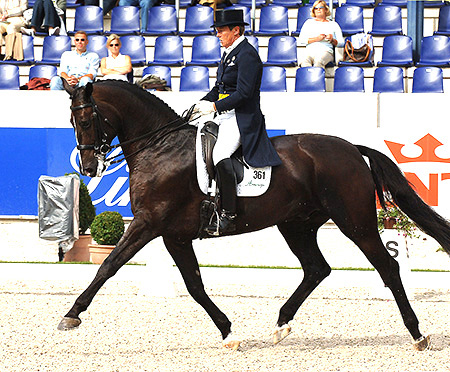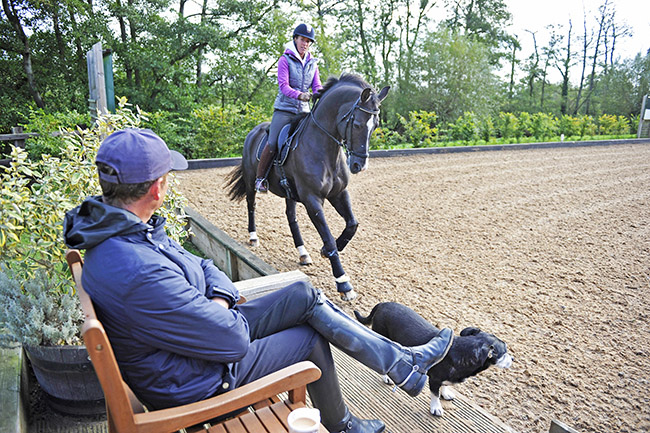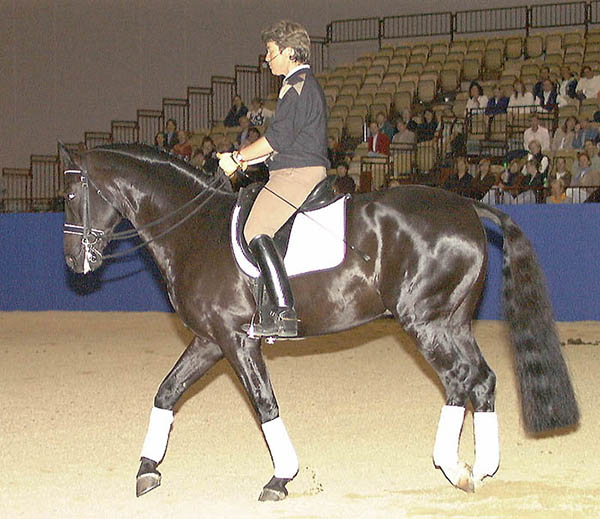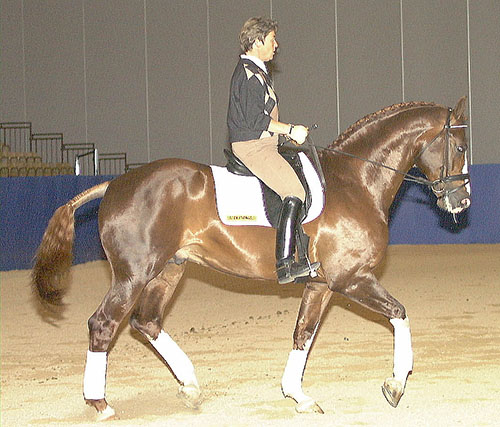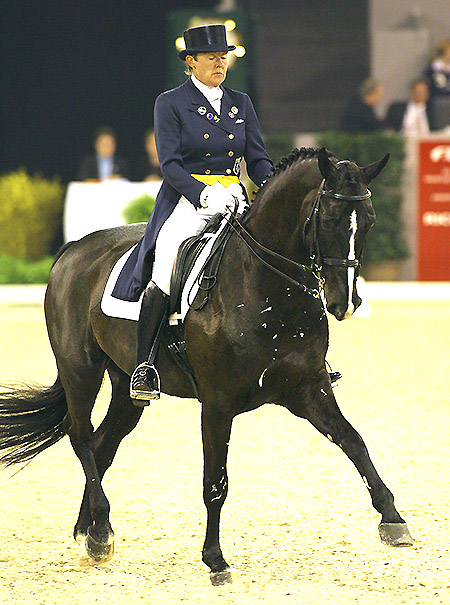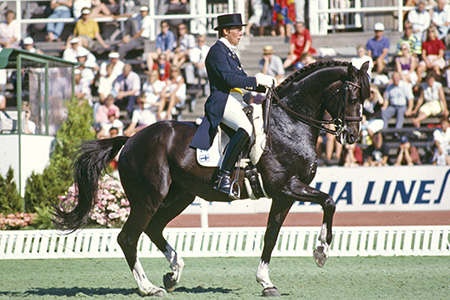Putting your horse on the bit with Jane Savoie
Dressage trainer, Grand Prix competitor and author Jane Savoie outlines a simple, no-miss system that helps make all your riding more pleasurable for both you and your horse…
At clinics I teach around the country, one complaint I hear over and over, from students at every level, is how hard they find putting a horse on the bit. What I tell them – and what I’ll tell you – is that it doesn’t have to be that way. Using a simple system I’ll show you, you can put your horse on the bit and keep him there. And once you’ve experienced on the bit you’ll never be satisfied with less.
Why go to the trouble of putting your horse on the bit?
Because quite simply, this quality makes him wonderful to ride. He feels organised, comfortable, connected, and easy to control. Everything he does has a flow and a harmony. He even feels more eager and willing.
In nature, when a horse is frightened, he sticks his head up, his neck stiffens, his back goes hollow, and he has a one-item agenda, save yourself. When he’s relaxed and contented, however, his head is down, his neck is long, and his back is round. The picture of roundness you see when a rider puts a horse on the bit actually creates just such a mental state of willingness and relaxation.
A horse who is not on the bit is mentally not with his rider. He’s more easily distracted, inclined to react instinctively to frightening sights or sounds, by shying or running off, and he may even resist openly. His body feels disorganised, like a jumble of disjointed pieces rather than a well-oiled machine. He’s difficult to turn and steer – and to my mind, he’s very uncomfortable to sit on.
Besides making physical and mental connections, on the bit gives oomph to your training program. How? Moving free, even the most unassuming horse can look graceful, balanced and expressive in his movement. But plop a saddle on his back, climb on, change his balance, and suddenly this graceful creature moves like a dump truck and steers like a barge.
Trying to restore under saddle the beauty and ease of movement that the horse possesses at liberty is what training is all about. And training is at its most effective and easiest ,when the horse carries himself mostly with the topline muscles over his croup, back, and neck. When does he do that? When he’s on the bit. His body assumes a round frame, his hind legs reach well under him, and rather than muscling up willy-nilly, he develops those muscles along his topline properly – evenly and without undue stress. (I’ve seen horses’ muscling improve with as little as five days of being ridden on the bit.) As he does, he enhances all the wonderful qualities you’re trying to bring out, like suppleness, flexibility, and the beginnings of collection.
Training a horse who is not on the bit is like stuffing money into an old mattress. Even if you still have the cash a year from now, it won’t be worth any more and it’ll probably be worth less. But training a horse who is on the bit is like putting your money where it earns double-digit compound interest. At year’s end, not only do you have what you started with – it’s worth much more!
In this article I’ll help you achieve ‘on the bit’ the same way I help students at clinics, using a simple step-by step, half-halt signaling system that produces almost immediate results. In fact, I’ve never seen it not work in the very first session. Then, because you may be working without the guidance of a trainer (and because things that look and feel right aren’t always okay), I’ll give you a few easy tests to check the correctness of your aids and your horse’s response to them.
more follows
Before You Start
‘On the bit’ is definitely a case of one feel being worth a thousand words. If you haven’t experienced it, try to arrange a lesson or two, or at least a couple of spins around the ring on a schoolmaster – and experienced horse that has got it down pat. If you get on him after his regular rider has been working him on the bit for several minutes, the feeling will linger, try to memorise it, knowing that’s what you’re working toward. An experienced helper or a friend with a good pair of eyes is another help, since a lot of on the bit is the horse’s silhouette and frame.
You’re correct, you won’t be able to get the feel on Valegro with Carl watching, but eyes-on-the-ground are necessary for everyone…
If you can’t arrange that, and, after a session or two, if you and your horse find yourselves truly stuck, seek the help of a qualified teacher to guide you or even put your horse on the bit for you. Limit your sessions to thirty minutes or less (twenty to thirty if your horse is a youngster), including a lengthy warm-up. Since you’ll need plenty of time to think about what you’re doing, how you are doing it, and how your horse is reacting, start at the walk – unless he paces, and gets really tense walking, or just won’t stay forward and rhythmical, in which case you are better off at the rising trot.
Begin with the Basics
Use your warm-up to establish forward motion, straightness, rhythm and contact. For a moment don’t worry about the rest of your horse’s frame, without these four qualities you won’t be able to accomplish a thing; once you’ve got them, you’ll have the foundation for putting him on the bit.
First make sure your horse is thinking and moving forward across the ground with relaxed, long, free strides and is in front of your leg. What does that mean? He’s responding immediately and enthusiastically to the lightest of leg pressures. Try it: Lightly close your legs. If he moves off immediately and eagerly, you are in business. But if he stands there or ambles off, resist the temptation to squeeze harder – he’ll just get duller, and you’ll end up doing all the work.
Instead put him in front of your leg by squeezing as lightly as you did the first time. If, once again, he doesn’t respond, tap him with the whip behind your leg (not on his hindquarters or he might kick out) or take your leg off and give several sharp thumps, wham, wham, wham. Don’t confuse him by lifting your heel and going, jab, jab, jab with a spur, he’ll think you’re giving a stronger aid to go forward. You want him to know that this is not an aid, this is a punishment.
Now here’s the key. As soon as you get a response – even a disorganised or startled one – to your whip or your thump, bring your horse back and squeeze lightly again. If he immediately goes energetically forward, praise him generously. Say Good boy and rub his neck with your fingers (you don’t need to overdo it). If he responds in the okay to adequate range, but not with a 100% wholehearted effort, tap sharply or thump again. When he responds, bring him back and do the light squeeze again. Your goal? To whisper your aids and have him shout his response.
Straightness means your horse’s spine corresponds to whatever line he’s tracking on. Straightness on the long side, centre line, and diagonal means his spine is straight; straightness on circles, corners and curved lines means his spine is bent. In either case, his hind feet basically follow the same track as his front feet.
Rhythm is the next foundation quality.
Each horse’s rhythm is unique, but every horse’s rhythm keeps him in comfortable balance by being regular: neither too fast nor too slow, with equal intervals between the steps. To check the regularity of your horse’s rhythm count his steps. In the walk, you should hear four evenly spaced beats – 1, 2, 3, 4, 1, 2, 3, 4. If you hear something like – 1,2…3,4 – improve the rhythm by slowing the walk and/or separating the steps that are too close together, something you can do by asking him to step sideways in leg-yield.
In trot, two diagonal legs (for example, the outside hind and inside fore) strike the ground together, followed by a moment of suspension when all four legs are off the ground, then the striking of the other diagonal pair. Your counting should sound like a metronome, 1 – 2 – 1 – 2.
In canter, you should be able to count a clear 1-2-3 rhythm. If you hear 1-2-3-4 your horse is four-beating, and you need to ride him more forward, almost into a lengthening to create rhythm in the gait.
Contact is the first quality you should think about in your warm-up, since on the bit demands that your horse go forward into your sympathetic hands. What creates good contract?
- A straight line from the bit, through your hand to your elbow, which makes the action of the rein go through your horse’s body. What do these words mean? That the energy coming into the bit returns full circle, back through the neck and spine, to help him carry his weight on his hindquarters and bend his joints more athletically.
- A firm feel of the bit, which maintains the connection from your horse’s hind legs (his engine) into your hands. Take a good solid one or two pound feel in each hand. Ideally he will seek the contact, if he doesn’t the reins will be loopy, shorten, but be sure to combine shortening with riding him forward from your leg, otherwise you’ll back him off, particularly if he’s used to no feel. All of a sudden he’s going to think, ‘Uh-oh, the door is slammed. I can’t go anywhere’.
- Consistency, meaning the reins don’t go loopy, then tight, then loopy. Consistent contact is inviting because it never changes, you horse always has the same reassuring feel from your hand. I’d rather see you maintain a contact that’s a bit too firm than repeatedly take and then lose contact with his mouth, which just punishes him with every step he takes.
- Elasticity. When you think elastic, think elbows. Grease up the elbow joints until they naturally open and close according to your horse’s gaits. In the walk and canter, when he uses his head and neck in a forward-and-back motion, follow him with your elbows, letting them go forward toward his mouth with every stride, then back to their position by your side. In the rising trot, his neck stays fairly still, but you move up and down. To keep your hands steady, your elbows need to compensate.
How important is elasticity? Lock your elbows at your sides at the walk, your horse will slow down or stop. Cantering, he’ll break. At the trot, your hands will bounce up and down – there goes your consistent contact.
- Even contact means you feel equal weight in both hands because your horse isn’t hanging on either rein. To offer even contact, keep your hands softly closed around the reins (as if each were holding a baby bird you didn’t want to crush), your thumbs the highest point and each hand mirroring the other. When is contact uneven? When both hands are not the same distance from your body. When the angle or position of one hand is different from the other.
Now… is your horse warmed up? The answer is ‘yes’ if he’s forward, not only over the ground but in his thinking, if he’s straight, with his hind feet following in the tacks of his front feet, if he’s maintaining a good rhythm, and if you are offering and he’s accepting an inviting, sympathetic contact that’s firm, consistent, elastic, even, and straight from your elbow through your hand to the bit. If, at any time while you are working on putting him on the bit, you lose any of these qualities, forget about the half-halt while you re-establish the quality you have temporarily lost. Then and only then, reapply our half-halt.
Coming up soon, part 2 Jane explores The Half-Halt made easy, and problem solving…
Breeding a dressage star in Australia this season?
Choose from a great range of stallions, new stars, and proven sires
Go to www.ihb.com.au
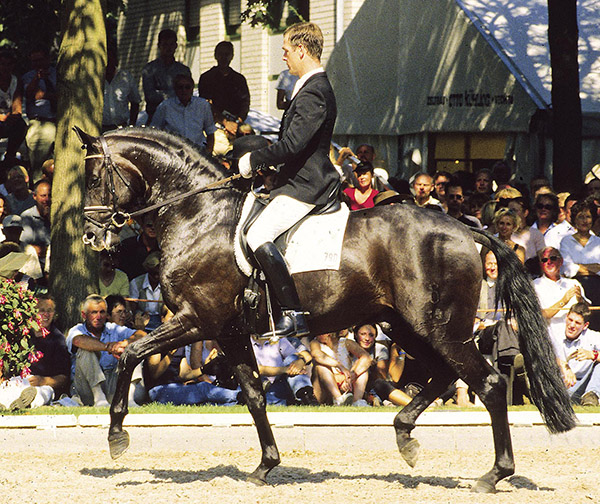
Sandro Hit
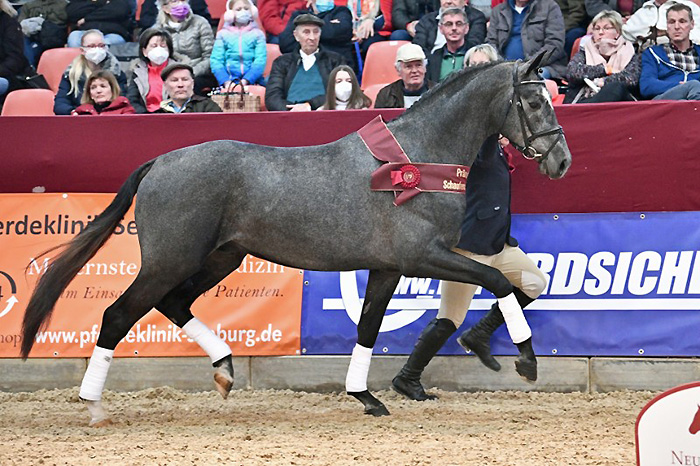
Bloomingdale



